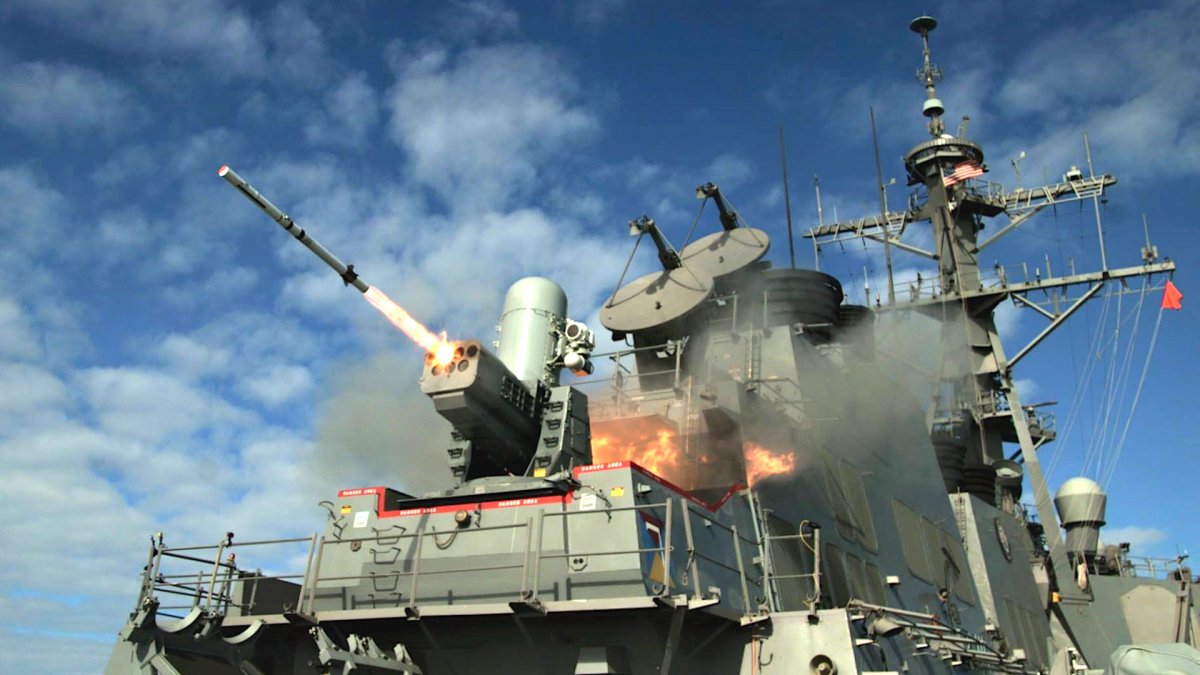I think it rolls back to the "can't have it all conundrum". Can't have an endless fleet of ships holding every weapon for every mission. So there are necessary choices. To afford 11 GP frigates, we must stick to a budget and production schedule. Weapon systems will be central to this as they are the expensive and complicated bit.
In regards to the point defence capability, the choices are ESSM, RAM or Phalanx. There are some derivitives, for brand preference, but ultimately they are the options.
I would view that the best point defence is the ESSM by a substantial margin and a GP frigate should have as many of these as possible. If it has a 16VLS, then the entire VLS should hold ESSM. I would be tempted to also say if it had 32 VLS then still fill it up with ESSM. Short of the full on exo atmospheric ballistic missile attack (which is unlikely against a GP frigate) its going to provide solid protection against anything.
I kinda view that ESSM and RAM overlap too much. If you have ESSM I'm just not sure where you would use RAM. A missile gets through the first ESSM, send another ESSM. Perhaps RAM has a role if all ESSM are expended, but that is either a bad day in hell, or you did not to have a full magazine to start with. RAM are not cheap either, costing about the $1 million per shot.
Phalanx, Bofors40 or Oerlikon Millenium, I think are more complimentary with ESSM (i.e some form of 30-40mm cannon). They are good out to the 3-5km range and deal with the drone style threats at a lot less cost than either ESSM or RAM. They are easily reloadable too and you don't need a massive armoury to store spare ammunition. I personally like the Oerlikon the best, but would suggest the Phalanx because it is already in our system.
So, for a GP frigate I would suggest ESSM and Phalanx, as the combined point defence, as the best package for the lowest cost.
In regards to magazine depth, and the ability to use SM2/SM6 and other strike weapons, then get a couple of LOCSV tag alongs. I would prefer a smaller and cheaper GP frigate with a simple 16VLS, that can utilise these craft en mass, than a big GPF with all the bells and whistles but limited to itself.
Use the LOCSVs as SM2/6 batteries, and send them home when they are exhausted. Have a new one sent to you fully loaded to meet in transit. Do this as many times as you need. Interchange with USN/Japanese/Korean LOCSVs if ours are not close by.
Keep your own GPF based ESSM for what the LOCSV based SM2/6 can't intercept, and for when the LOCSVs are expended. Even have some ESSM on the LOCSVs so you don't need to use your own.
As an expanded option, the LOCSVs could also be fitted with Phalanx (with its own radar and Aegis remote link) to provide a wider area anti drone coverage.
Picture a convoy of merchant ships protected by one 16VLS GPF, accompanied by 2 x 32 VLS LOCSVs (78 VLS total). Lets say the GPF is entirely ESSM (64), and the LOCSVs each have 32 ESSM, 4 ASROC and 20 SM2/6. That's a convoy total of 128 ESSM, 8 ASROC and 40 SM2/6. Plus any NSM and lightweight torpedo holdings on the three platforms. For argument's sake each vessel has a Phalanx, so three drone defences as well.
In my mind that is a better overall package than a single GPF loaded to the hilt with VLS, RAM and Phalanx. And better bang for buck. And it resolves the missile replenishment at sea problem. And it should be able to cope with the bad day in hell event.


